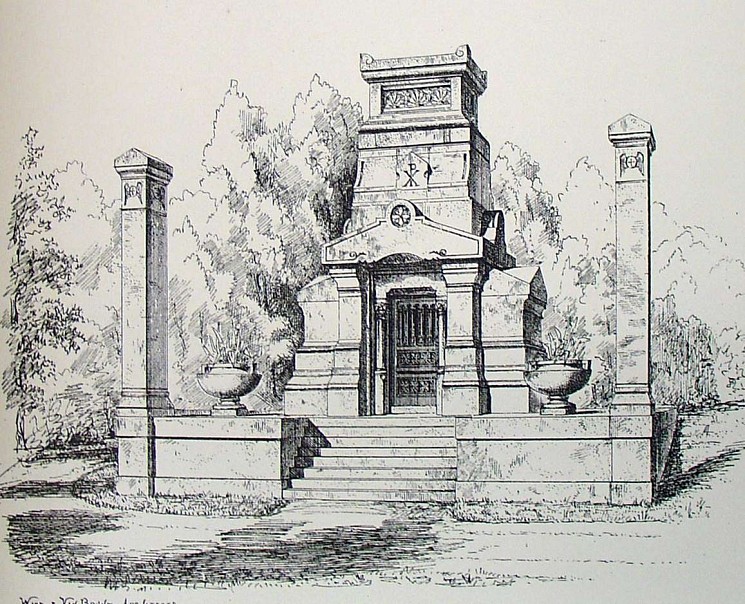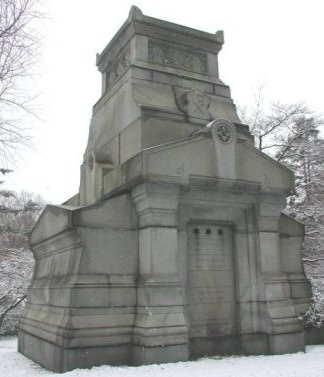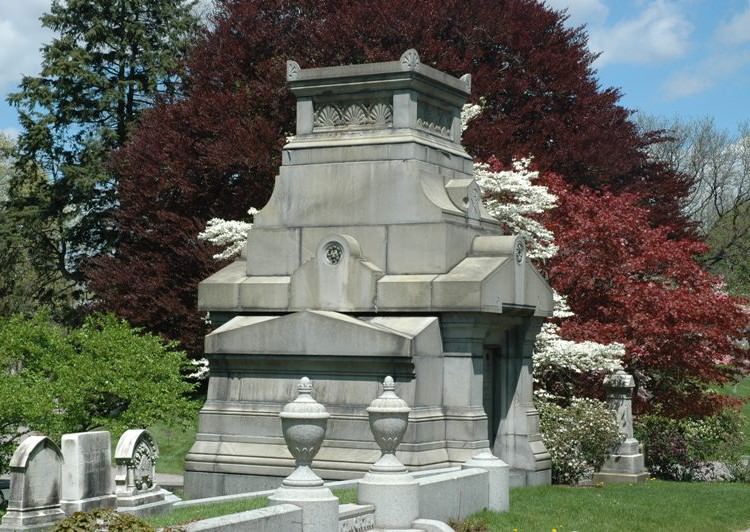Freeland Mausoleum

The Freeland mausoleum is a highly visible element of Mount Auburn’s historic landscape, with additional aesthetic and cultural significance. Built c. 1874, it is the first freestanding tomb in the Cemetery and is prominently sited near the Cemetery’s entrance at the intersection of Lawn and Central Avenues, facing Asa Gray Garden. The mausoleum was commissioned by Boston merchant Charles Freeland (1821-1883) who was best known for
selling ready-made clothing and was a trustee of the Great Falls and Dwight Manufacturing companies. Freeland chose well known architects Henry Van Brunt and William Robert Ware (William Robert Ware (1832 – 1915) is buried in the Ware family lot at Mount Auburn, located on Locust Path) to carry out the mausoleum’s design. Interred within the mausoleum are Charles, his wife Sarah, niece Agnes Davis, and family friend Wilfred Thomas.
Ware and Van Brunt also designed Harvard University’s Memorial Hall which was constructed during the same time as the Freeland mausoleum. Interestingly, the top of Memorial Hall’s tower features a design that is strikingly similar to the mausoleum’s. However, unlike Memorial Hall, the Freeland mausoleum is made of gray granite and it’s design has Greek and Egyptian overtones, which were very popular at the time and are reflected in Mount Auburn’s Egyptian Revival Gateway. The structure’s gables feature carved rosettes and inscribed tracing around the stone’s edges. A Chi-Rho is incised on the front and back façade. Atop the gabled section of the mausoleum is a granite tower which reduces in size as it gains in height. The tower is inscribed with a shell band on each side and carved anthemion on each corner.


Leave a Reply